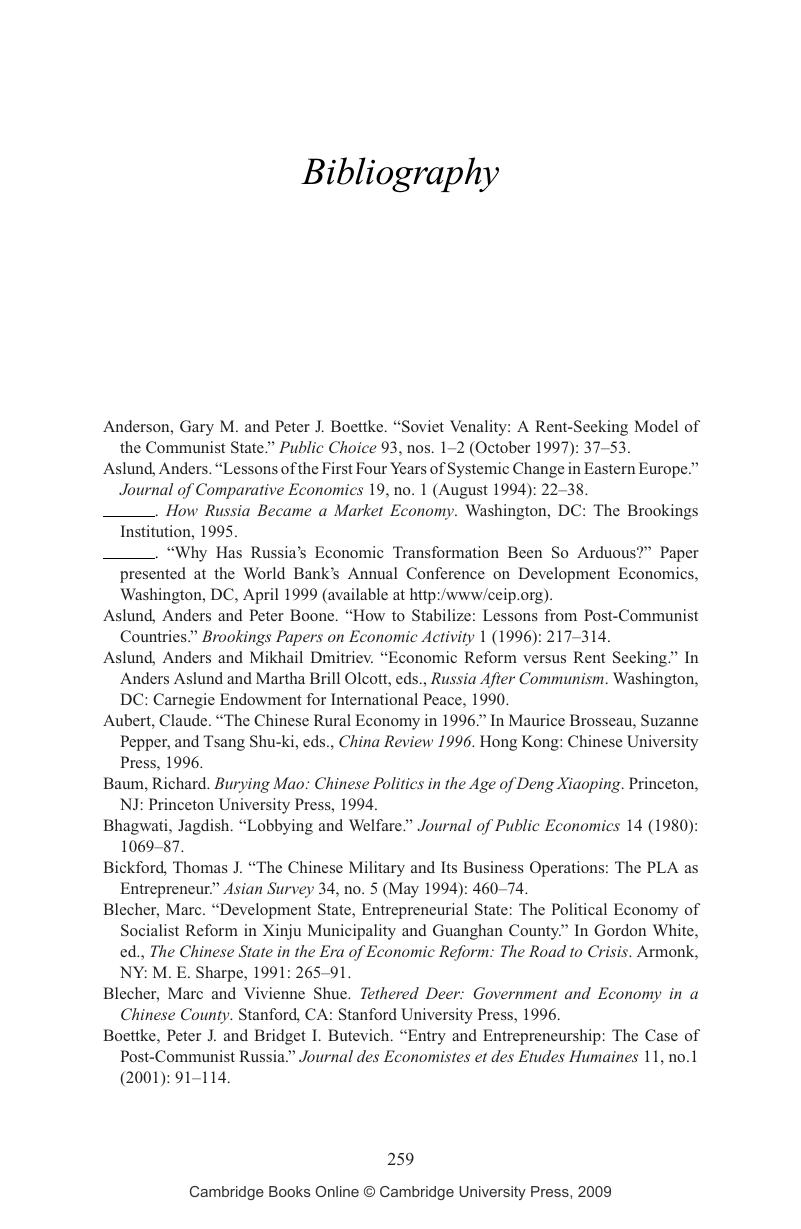Bibliography
Published online by Cambridge University Press: 25 July 2009
Summary

- Type
- Chapter
- Information
- From Mao to MarketRent Seeking, Local Protectionism, and Marketization in China, pp. 259 - 272Publisher: Cambridge University PressPrint publication year: 2003



